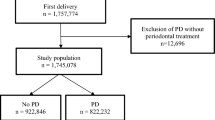Abstract
Data sources The systematic review has used various databases (EMBASE, Medline, ScienceDirect, Google Scholar), as well as hand searching, to collect its data sample. There is no mention of the authors' affiliations or any funding declaration. In addition, there is no mention of an information specialist/search strategist in the team. There is mention of two review authors who have been blinded to the authors of the studies, and their publication years, but there is no mention as to whether they could concur among themselves. In addition, they have mentioned a third expert when needed, but do not mention when or in what circumstance they were needed, as well as their credentials. This has the potential to introduce bias.
Study selection The abstract analyses 31 studies, of which 20 met the quality assurance criteria. The papers searched for were those in both Spanish and English, which may potentially increase the number of relevant studies that contribute to data synthesis. The original searches identified 3,104 articles, yet the search strategy has not been adequately detailed by the authors; only a basic description of the type of phrases which were entered into the databases is provided. Table 1 clearly displays the databases and sources for the data collection, but it does not show how many papers were utilised from each database and there is no detail as to whether the search strategy was amended to align with the requirements of each database. A detailed strategy would be essential for transparency and reproducibility, and is a significant omission to the review. The authors have also observed that the literature search was performed in 2017 and the paper was published in 2018. However, the search strategies are only up until 2016, and due to this, there is potentially missing data from 2016-2018. In this missing data, one of the most important factors is the new international guidelines on periodontal disease diagnosis, which would have been instrumental in defining what the author describes as 'periodontitis'.
Data extraction and synthesis This study excluded papers that used ambiguous definitions for periodontitis, but fails to define what 'ambiguous' means and what the criteria or diagnostic process were. In addition, the PRISMA diagram excludes studies that are 'short', with no mention of how this has been determined or justification for this exclusion. In addition, in the diagram, there is an incomplete sentence: 'Did not include a description of the...' - the description is incomplete and it is unclear what the authors were eluding to.
Results Positive association does not equal causation and this is poorly defined. The results display an odds ratio of 2.01, 95% CI 1.81-2.36, which, if the methods were reproducible, would be a very statistically significant result.
Conclusion Women with chronic periodontitis who are expecting children are at a twofold increase in the risk of their baby being born prematurely. Assessment of periodontal diseases in expectant mothers is not defined by professional consensus.
This is a preview of subscription content, access via your institution
Access options
Subscribe to this journal
Receive 4 print issues and online access
$259.00 per year
only $64.75 per issue
Buy this article
- Purchase on Springer Link
- Instant access to full article PDF
Prices may be subject to local taxes which are calculated during checkout
Similar content being viewed by others
References
Balshem H, Helfand M, Schünemann H J et al. GRADE guidelines: 3. Rating the quality of evidence. J Clin Epidemiol 2011; 64: 401-406.
Caton J G, Armitage G, Berglundh T et al. A new classification scheme for periodontal and peri-implant diseases and conditions - Introduction and key changes from the 1999 classification. J Clin Periodontol 2018; 45 Suppl 20: S1-S8.
Tonetti M S, Greenwell H, Kornman K S. Staging and grading of periodontitis: Framework and proposal of a new classification and case definition. J Clin Periodontol 2018; 45 Suppl 20: S149-S161.
Manrique-Corredor E J, Orozco-Beltran D, Lopez-Pineda A, Quesada J A, Gil-Guillen V F, Carratala-Munuera C. Maternal periodontitis and preterm birth: Systematic review and meta-analysis. Community Dent Oral Epidemiol 2019; 47: 243-251.
Author information
Authors and Affiliations
Rights and permissions
About this article
Cite this article
Bhola, S., Geddis-Regan, A. Could optimising periodontal health in expectant mothers reduce the risk of babies being born prematurely?. Evid Based Dent 22, 14–15 (2021). https://doi.org/10.1038/s41432-021-0149-3
Published:
Issue Date:
DOI: https://doi.org/10.1038/s41432-021-0149-3



